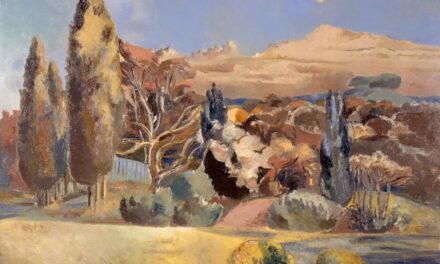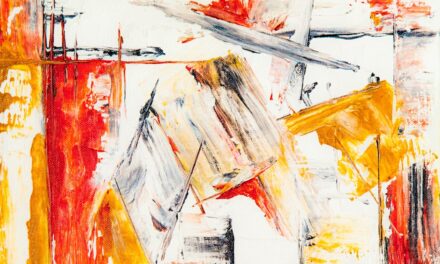Trompe-l’œil, a French term meaning “deceive the eye,” has a rich and fascinating history that dates back to ancient civilisations. The earliest known examples of this technique can be traced to the frescoes of ancient Greece and Rome, where artists employed perspective and illusion to create lifelike representations of architectural elements and natural scenes. These early works were not merely decorative; they served to enhance the spatial perception of interiors, making rooms appear larger or more elaborate than they truly were.
The Romans, in particular, excelled in this art form, using it to create stunning visual narratives that captivated viewers and transformed mundane spaces into grandiose environments. During the Renaissance, trompe-l’œil experienced a resurgence as artists sought to explore the boundaries of realism and illusion. Pioneers such as Andrea Mantegna and Michelangelo pushed the limits of perspective, employing chiaroscuro and foreshortening to create depth and dimension in their works.
This period marked a significant evolution in the technique, as artists began to incorporate more complex narratives and symbolism into their compositions. The Baroque era further expanded the possibilities of trompe-l’œil, with artists like Giovanni Battista Gaulli and Andrea Pozzo creating elaborate ceiling frescoes that seemed to dissolve the boundaries between architecture and painting. These works not only showcased technical prowess but also aimed to evoke emotional responses from viewers, drawing them into a world where reality and illusion intertwined.
Summary
- Trompe-l’œil techniques date back to ancient Greece and Rome, with evidence of illusionistic painting found in Pompeii.
- Trompe-l’œil works by creating a realistic illusion that tricks the viewer’s eye into perceiving a two-dimensional image as a three-dimensional object.
- Artists use a variety of materials and tools in trompe-l’œil art, including paint, brushes, and sometimes even real objects to enhance the illusion.
- Beginners can master trompe-l’œil by practicing perspective, shading, and using reference images to create realistic illusions.
- Famous examples of trompe-l’œil art include Andrea Mantegna’s “The Camera degli Sposi” and Salvador Dali’s “The Face of War,” showcasing the technique’s enduring appeal throughout history.
Understanding the Illusion: How Trompe-l’œil Works
Techniques of Trompe-l’œil
Linear perspective involves the use of vanishing points and converging lines to create the illusion of space, while atmospheric perspective relies on the subtle gradation of colour and clarity to suggest distance.
The Psychology of Perception
By skillfully combining these techniques, artists can trick the viewer’s eye into perceiving depth where none exists. The effectiveness of trompe-l’œil also hinges on the viewer’s engagement with the artwork. The brain instinctively interprets visual cues based on past experiences and learned perceptions.
The Dynamic Illusion
When an artist successfully employs trompe-l’œil techniques, the viewer’s mind fills in the gaps, leading to a momentary suspension of disbelief. This interplay between perception and reality is what makes trompe-l’œil so captivating; it invites viewers to question their understanding of space and form. As they move around the artwork, their perspective shifts, revealing new angles and dimensions that further enhance the illusion. This dynamic relationship between the artwork and its audience is what has allowed trompe-l’œil to endure as a compelling art form throughout history.
The Materials and Tools Used in Trompe-l’œil Art
Creating trompe-l’œil art requires a careful selection of materials and tools that can effectively convey the desired illusion. Traditionally, artists have relied on oil paints for their rich colours and versatility, allowing for smooth blending and detailed brushwork. The use of oil paints enables artists to achieve a high level of realism, as they can layer colours to create depth and texture.
Additionally, watercolours and acrylics have gained popularity in contemporary trompe-l’œil practices due to their quick-drying properties and ease of use. In terms of tools, brushes of various sizes are essential for achieving different effects, from fine details to broader strokes. Palette knives can also be employed to create texture or sharp edges that enhance the illusion of three-dimensionality.
Beyond traditional painting tools, some artists incorporate mixed media elements such as plaster or wood to add physical depth to their works. This approach not only enhances the visual impact but also invites viewers to engage with the artwork on a tactile level. Furthermore, modern technology has introduced digital tools into the realm of trompe-l’œil, allowing artists to experiment with virtual reality and augmented reality applications that push the boundaries of traditional techniques.
Mastering Trompe-l’œil: Tips and Tricks for Beginners
For those aspiring to master trompe-l’œil techniques, understanding the fundamentals of perspective is crucial. Beginners should start by studying basic principles such as vanishing points, horizon lines, and how objects recede into space. Practising these concepts through simple exercises can help build a solid foundation for more complex compositions.
Additionally, observing real-life objects and environments can provide valuable insights into how light interacts with surfaces, informing decisions about shading and colour choices. Another essential tip for beginners is to work from photographs or life studies when creating trompe-l’œil pieces.
It is also beneficial to experiment with different materials and techniques to discover what works best for individual styles. Patience is key; trompe-l’œil requires meticulous attention to detail and a willingness to revise and refine one’s work. By embracing these challenges and remaining open to learning from both successes and failures, aspiring artists can develop their skills and create compelling trompe-l’œil artworks that captivate viewers.
Famous Examples of Trompe-l’œil Art Throughout History
Throughout history, numerous artists have left an indelible mark on the trompe-l’œil tradition with their innovative approaches and breathtaking works. One of the most celebrated examples is Andrea Pozzo’s ceiling fresco in the Church of Sant’Ignazio in Rome. Completed in 1694, this masterpiece creates an illusion of an expansive sky filled with angels and saints that seems to extend beyond the confines of the church’s architecture.
Pozzo’s mastery of perspective draws viewers’ eyes upward, immersing them in a celestial realm that blurs the line between reality and imagination. Another iconic example is Giovanni Battista Tiepolo’s frescoes in the Würzburg Residence in Germany. Tiepolo’s work showcases his exceptional ability to create dynamic compositions that appear to burst forth from the ceiling.
His use of vibrant colours and intricate details enhances the sense of movement within the scenes, inviting viewers to experience a narrative that transcends time and space. These historical examples not only highlight the technical prowess of their creators but also demonstrate how trompe-l’œil can transform architectural spaces into immersive experiences that resonate with audiences across generations.
Contemporary Applications of Trompe-l’œil Techniques
In contemporary art, trompe-l’œil techniques have found new life as artists explore innovative ways to engage with audiences in both public spaces and galleries. Street artists have embraced this style, using large-scale murals to create striking illusions that interact with urban environments. Artists like John Pugh have gained recognition for their ability to transform building facades into captivating visual narratives that challenge perceptions of space.
These works often incorporate social commentary or playful elements that invite passersby to pause and reflect on their surroundings. Moreover, interior designers have increasingly turned to trompe-l’œil techniques as a means of enhancing residential and commercial spaces. By creating faux windows or architectural features on walls, designers can manipulate perceptions of space within confined areas, making them feel more open or inviting.
This application extends beyond mere aesthetics; it serves as a functional tool for creating atmospheres that resonate with occupants’ emotions. As technology continues to evolve, artists are also experimenting with augmented reality applications that allow viewers to interact with trompe-l’œil artworks in dynamic ways, further blurring the lines between reality and illusion.
The Psychological Impact of Trompe-l’œil Art on Viewers
The psychological impact of trompe-l’œil art on viewers is profound, as it engages both cognitive processes and emotional responses. When confronted with an illusionistic artwork, viewers often experience a momentary disorientation as their brains grapple with conflicting visual information. This cognitive dissonance can evoke feelings of wonder or curiosity, prompting individuals to explore the artwork more closely.
The surprise element inherent in trompe-l’œil can elicit joy or amusement, making it a powerful tool for artists seeking to connect with their audience on an emotional level. Furthermore, trompe-l’œil art has the potential to challenge perceptions of reality itself. By creating illusions that defy conventional understanding of space and form, artists encourage viewers to question their assumptions about what they see.
This introspective journey can lead to deeper reflections on themes such as perception, truth, and representation in art.
Exploring the Future of Trompe-l’œil Techniques in the Art World
As we look towards the future of trompe-l’œil techniques in the art world, it is clear that this age-old practice continues to evolve alongside advancements in technology and shifts in artistic expression. The integration of digital tools has opened up new avenues for experimentation, allowing artists to create immersive experiences that transcend traditional boundaries. Virtual reality installations offer viewers an opportunity to step inside trompe-l’œil environments, engaging with illusions in ways previously unimaginable.
Moreover, as contemporary artists increasingly address social issues through their work, trompe-l’œil techniques may serve as a powerful medium for commentary on perception and reality in our rapidly changing world. By challenging viewers’ expectations and inviting them to reconsider their surroundings, artists can use trompe-l’œil as a means of fostering dialogue about important themes such as identity, environment, and community. In conclusion, trompe-l’œil remains a vibrant and relevant art form that continues to captivate audiences across generations.
Its rich history, technical intricacies, psychological impact, and contemporary applications all contribute to its enduring appeal within the art world. As artists push the boundaries of this technique into new realms of possibility, we can anticipate exciting developments that will further enrich our understanding of perception and illusion in art.
If you are interested in Trompe-l’œil Techniques: When Art Deceives the Eye, you may also enjoy reading about an introduction to the Frick Collection in New York City, USA. This article explores the history and highlights of this renowned art collection, providing insight into the world of art appreciation and curation. To learn more about this fascinating museum, visit here.


